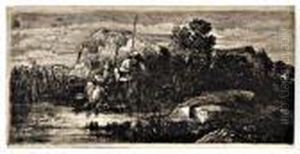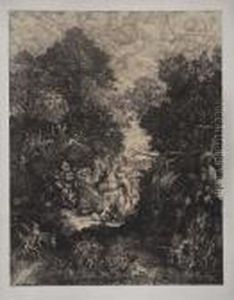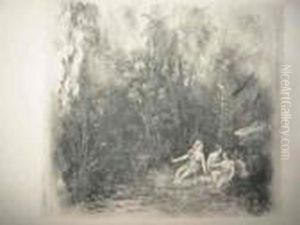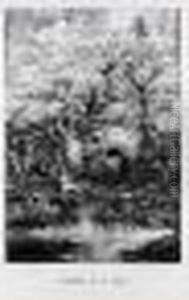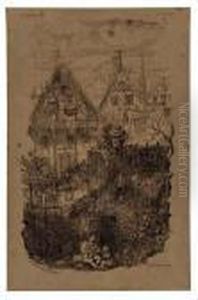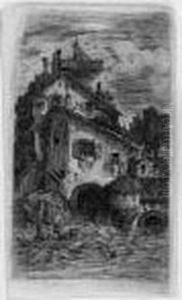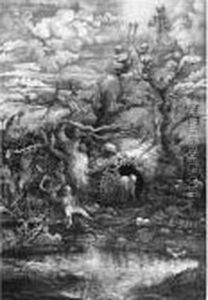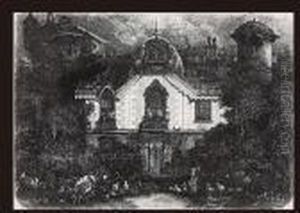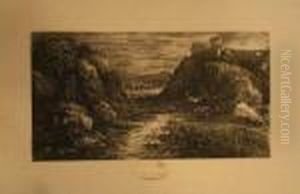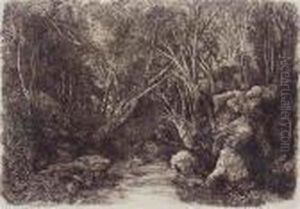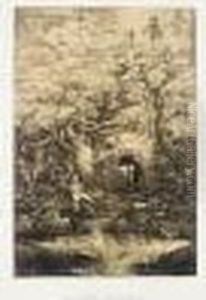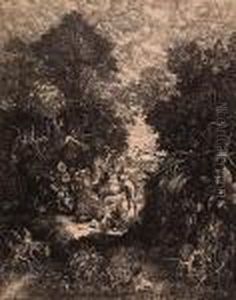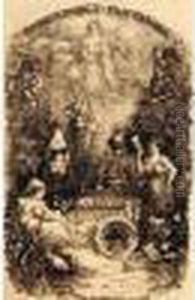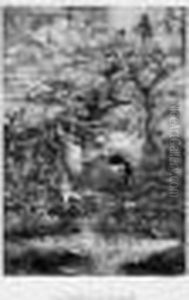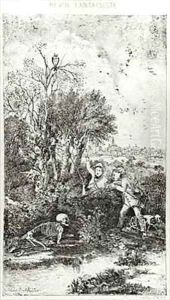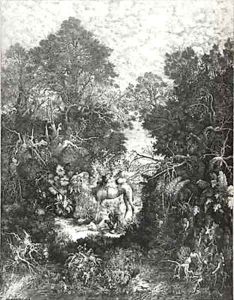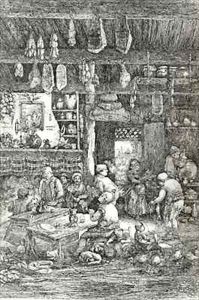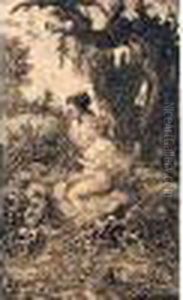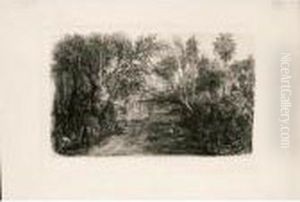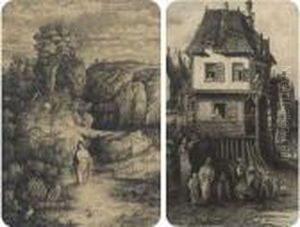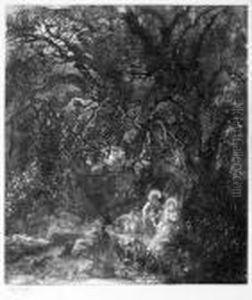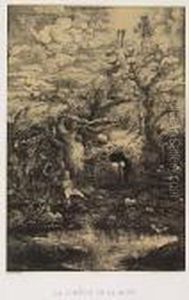Rodolphe Bresdin Paintings
Rodolphe Bresdin, born on March 12, 1822, in Le Fresne-sur-Loire, France, was a highly imaginative and enigmatic French printmaker and draftsman, best known for his intricately detailed etchings and lithographs. Bresdin's work is characterized by its fantastical elements, dense compositions, and remarkable attention to detail, often drawing from biblical, medieval, and oriental influences. Despite his considerable talent, Bresdin lived much of his life in poverty and obscurity, moving frequently throughout France and spending a significant period in the Netherlands.
Bresdin's artistic career began in the 1840s, but it wasn't until the 1850s and 1860s that his unique style began to mature, marked by works such as 'The Good Samaritan' (1857). His technical prowess and imagination are particularly evident in his masterpiece, 'The Comedy of Death' (1854), which showcases his ability to create complex, dream-like scenes filled with minute detail. Bresdin's work was often out of step with the prevailing artistic trends of his time, and he received little recognition from his contemporaries.
Despite his lack of commercial success, Bresdin was admired by a small group of artists and intellectuals, including the young Odilon Redon, who considered him a mentor. Bresdin's influence on Redon and other Symbolist artists is notable, particularly in their shared interest in the mystical and the macabre.
Bresdin's later years were marked by financial struggle and declining health. In 1873, he moved to Charenton-Saint-Maurice, where he continued to produce work but with diminishing output. Rodolphe Bresdin died on January 11, 1885, in Sèvres, largely forgotten by the art world. It was not until the 20th century that his work was rediscovered and appreciated for its originality and depth, securing his place as a unique figure in the history of art. Today, Bresdin is celebrated for his visionary compositions and as a precursor to the Symbolist movement, despite the obscurity and hardship that marked much of his life.






![Interieur Flamand, 1861 [van Gelder 86iv]](https://www.niceartgallery.com/imgs/1929128/s/rodolphe-bresdin-interieur-flamand-1861-van-gelder-86iv-f359f273.jpg)

